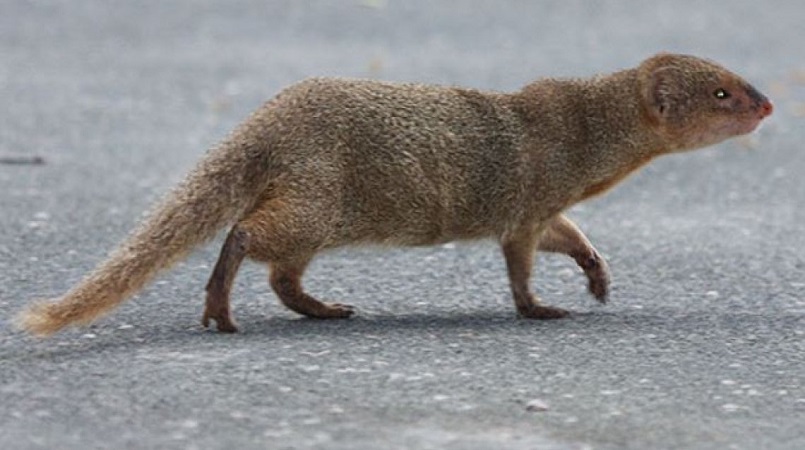
For island habitats where the indigenous flora and fauna evolved in the absence of mammalian predators the threat of an invasion is an ever present danger.
There are numerous examples in Oceania where the sudden arrival of rats and other species saw a rapid decline in the indigenous flora and fauna and numerous extinctions.
This nightmare situation is again being potentially reenacted with the escape in Tonga last month of six small Indian mongooses that hitched a ride from Fiji inside a shipping container along with a load of paint. It was not inspected until after a startled local realized the super large rat he was watching was actually a big mongoose. In a lesson for the future, Tonga Quarantine was not called immediately. They subsequently learnt of the six stowaways. Two were dead, one killed by the staff of the importing company and another by a close by trap. But two escaped and while they have been seen, they are still at large.
So in response to a request for help, BirdLife Pacific Invasive Programme Manager Steve Cranwell packed his bags and went to Tonga with special traps designed for catching mongoose. Some 22 traps were placed at 100-200 meters apart in likely habitat with vegetation cover where mongoose like to hide and seek refuge without disturbance. The call went out to the public for information on sightings.
The latest sighting was on Monday 25 July in a drain near the site they escaped from. They are clearly using this drain network to move around the area and it is proving difficult to trap them. However, the ‘good news’ is they appear to have remained in the area the trapping is concentrated in and with some modifications to the trap placements, persistence and a bit of luck there is hope they will be caught.
Mongoose were deliberately introduced to Fiji in 1883. Sugar planters imported the small Indian mongoose from Jamaica to four Hawaiian Islands and to the Fijian island of Viti Levu where they became well established.
“The theory was that mongooses would help control the rat population that was a problem for the plantation. But like so many introductions of one predator to control this did not work because mongoose are only active during the day and sleep at night and rats were only active during the night, so they never met,” he said.
Steve Cranwell said that in Fiji, mongoose is implicated in the extinction of some of the Ground Rail birds. They eat native wildlife, birds and chicken. “Chickens will soon disappear if mongoose are established in Tongatapu,” said Steve, They are also a danger to people's health as they can carry and spread diseases such as leptospirosis and rabies.
Another sad tale which emphasizes the danger to island wildlife of an invasion by a new predator. And the urgency of good biodiversity controls to stop their spread and eradication where it is possible.
